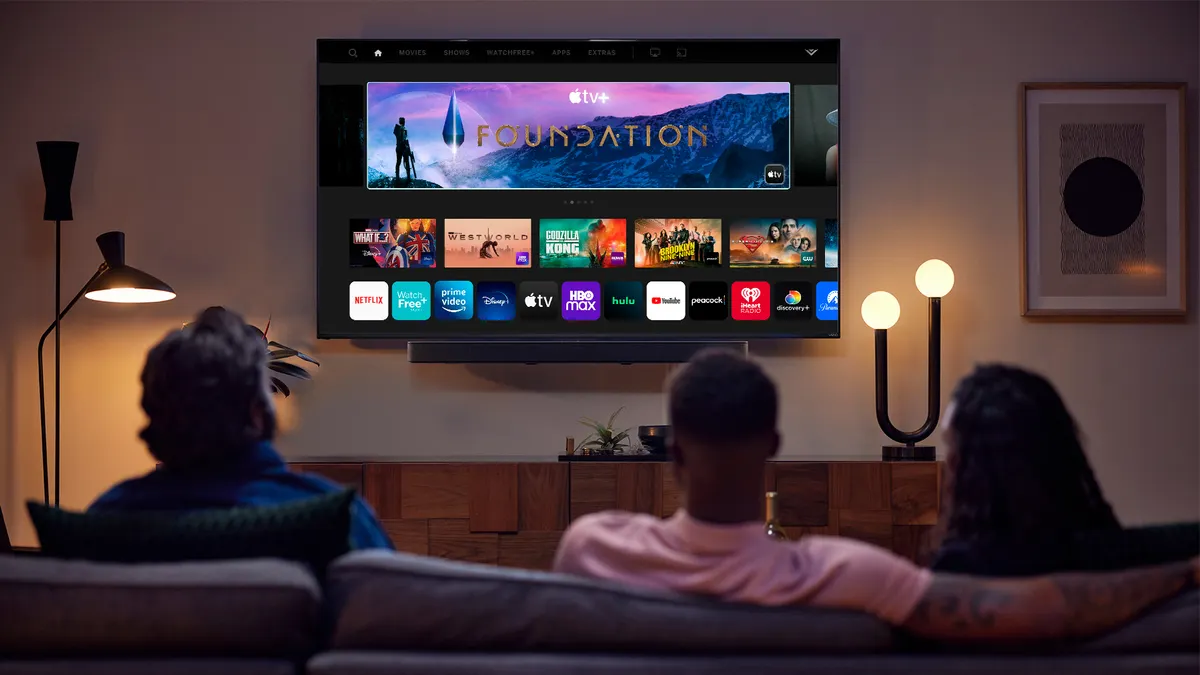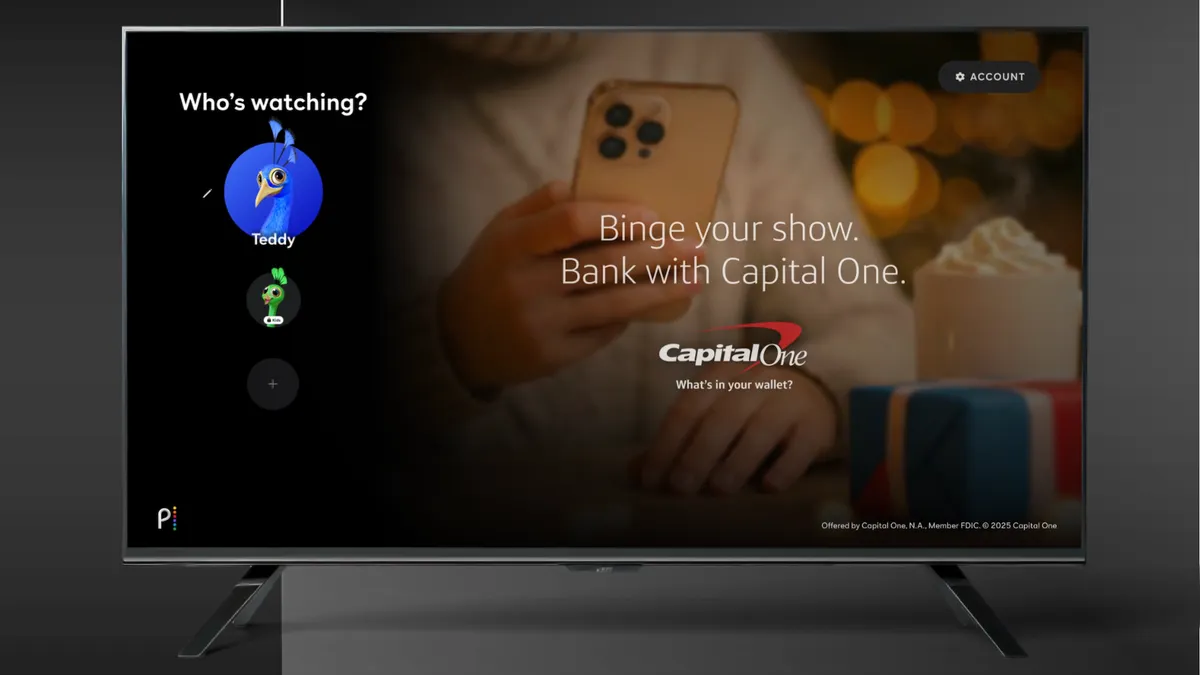As the annual TV ad-buying marketplace known as upfronts season approaches, activity is ramping up around the future of measurement in the era of streaming and connected TV (CTV). In the years since Nielsen’s stumbles caused it to lose crucial accreditation (which it has since earned back), alternative measurement providers and streaming-focused media companies have worked to bring competition and future-facing solutions to the market.
The Joint Industry Committee (JIC) founded last year by national TV programmers, major media agencies, streaming platforms and other industry players has worked quickly to enable measurement solutions. In its most significant step yet to establish and evaluate measurement standards, the group this month announced that Comscore and VideoAmp have been certified as transactable national currencies.
Chief executives from the firms that have emerged as a “Big Four” of currency-level measurement providers — Comscore, VideoAmp, Nielsen and iSpot — weighed in on the state of the industry and what's to come at a Coalition for Innovative Media Measurement (CIMM) summit on April 3.
“It’s not ‘change is coming’: Change is here,” said Peter Liguori, executive chairman of VideoAmp, a business he claimed is providing measurement and currency for 98% of the TV landscape. “It’s here, it’s now, it’s accelerating.”
Innovation and evolution
On the CIMM East panel, executives made it clear how much work has been done while still highlighting the promise of what could follow, especially if measurement firms continue to innovate in the space and differentiate themselves.
“We’ve had decades upon decades of homogeneity and no innovation and no competition. Now there’s competition here,” Liguori said in a likely shot across the bow at the once-monolithic Nielsen. “Now there is a freeing up of dollars to drive the innovation that the industry is asking for.”
That innovation includes developments around cross-screen measurement that enable marketers to allocate their investments more efficiently across linear and streaming TV. Cross-screen measurement is expected to remain a top priority for brands, not just at this year’s upfronts, but in the future as the TV ad marketplace continues to evolve, explained iSpot founder and CEO Sean Muller.
“I think, generally, the upfronts are going to get smaller and smaller over time. Scatter is going to get larger and larger, and a lot of the scatter inventories will likely end up being sold by programmatic platforms like The Trade Desk,” the executive said. “There’s a real shift that’s happening, and it’s actually happening faster than people realize, so I think this whole marketplace is going to look quite a bit different a few years from now.”
This year’s upfronts are likely to feel the impact of the last year of progress around measurement. The JIC and the MRC have ironed out the differences in their complementary roles, and there is more clarification around which currencies have transparent methodologies as the industry moves from using broad demos and gross-ratings points to impression-based transactions. But, as always, the process continues.
“If you look at where we were a year ago, I think we’ve come a long way, [but] there’s still plenty of wood to chop,” said Jon Carpenter, CEO at Comscore. “If you look at the transactional systems that sit between the buy and sell sides, there's still a lot of work that needs to be done to clean up a lot of the friction that exists there to make transacting on currencies other than Nielsen [possible].”
Big data and/or panels
While several panelists took shots at Nielsen, either directly or obliquely, the mood was less contentious than the last time these executives were on stage, at the Interactive Advertising Bureau’s Annual Leadership Meeting in January, as moderator and CIMM Managing Director Jon Watts noted.
At that event, Liguori and Nielsen CEO Karthik Rao sparred about their respective company’s capitalization challenges and debated the state of panels, which Liguori called, at the time, “deader than dead.” This time around, Liguori emphasized that VideoAmp uses “big data and panels, not panels and big data,” noting a shift echoed by other panelists.
“I think panels are going from the star of the show to a supporting role,” said Muller, noting that iSpot is the lead investor in panel startup TVision.
To understand — and deduplicate — which households and devices are reached by ads and content, big data is superior to panels, Muller explained. But for determining who is in the household and actually in front of the TV, panels are still better than big data. For those reasons, iSpot uses panels as a training set for AI models that are applied to big data to determine who in the household is watching. Similarly, Comscore, a pioneer of the big data approach, spends “tens of millions of dollars” on panels, along with using a semantic web crawler to pull contextual signals from its publisher integrations, Carpenter said.
“We’ve been leveraging the combination of big data and panel for the last 25 years,” the Comscore executive said. “We don’t see it as either/or — no one solution can solve the challenges of measurement today.”
Unsurprisingly, Nielsen’s Rao made a more pointed defense of the methodology that has been at the heart of his company’s offering for years, even as Nielsen makes investments and advancements in big data.
“Devices and big data [are] not the same thing as people. I know that sounds like a cliche, but it’s actually true,” he said, noting how big data can undercount Hispanic and Black audiences. “Over time, maybe the emphasis and bias will shift, but today, [panels] are critically important to measuring the entire audience and representing the entire population.”
Winners and losers
Whichever combination and methodology of big data and panels wins out, the measurement landscape will likely still be in flux. From the seven measurement firms invited to participate in the JIC process last year, only Comscore and VideoAmp received certification, with iSpot conditionally certified until a final decision is made in June. Further contraction of the market is still possible.
“It’s taken a lot of investment for there to be four people on this panel, and it’s up to you all in the industry to reward the innovation, to reward the disruptors, to make sure that next year this is a panel and not a fireside chat,” VideoAmp’s Liguori said.
Innovation and disruption are expensive, with costs of servicing clients, standing up panels as well as buying and processing data trending up. For the companies on the CIMM panel, streamlining operations and offering best-in-class products and solutions to the market is the only way forward, according to Comscore’s Carpenter.
“Quite honestly, there’s going to be continued consolidation in this space. There’s not enough money to go around to support four-plus measurement companies in this ecosystem,” the exec said. “It comes down to who’s got the solutions that are meeting the demands of today’s marketplace, which are very much omni-channel and cross-platform.”
As with everything economic, marketers will eventually have to weigh the costs of measurement versus the benefit of results. In one example, VideoAmp was able to increase Pepsi’s reach by 20%, lower CPMs by roughly 10% and drive sales at double-digit percentage points, according to Liguori, demonstrating the case measurement providers have to make to survive.
“Are you a cost center or are you a revenue generator?” the executive said. “That’s how you all will make your economic decisions: based on costs and measurement, or based on the only result that matters, sales.”



















